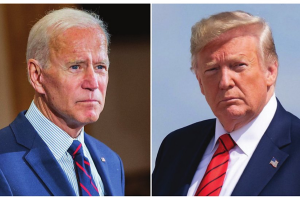As we await counting day on June 4, the nation’s economic and political landscape is on the cusp of significant transformation. The election results, whether a decisive victory for the incumbent government or a hung Parliament, will shape India’s trajectory for years to come. A closer look at the potential outcomes and their implications reveals a complex interplay of policy priorities and economic strategies that will define the next chapter of India’s development story.
Should Prime Minister Narendra Modi secure a third term with a commanding majority, we can expect a continuation and intensification of policies aimed at macroeconomic growth and technological advancement. This scenario promises robust fiscal discipline, with efforts to reduce the Centre’s fiscal deficit to 4.5 per cent of GDP by 2025-26. Such a majority would enable the government to push through significant reforms with minimal resistance, focusing on strategic sectors like renewable energy, automotive, electronics, textiles, and digital infrastructure. The emphasis on leveraging technology in both governance and the private sector would likely lead to significant improvements in efficiency and productivity. In this scenario, a third Modi government would continue its efforts to position India as a leader among emerging economies, advocating for greater representation in global forums and pursuing ambitious trade agreements.

The government’s foreign policy would likely prioritise diversifying exports and strengthening ties with key markets in AsiaPacific, West Asia, and neighbouring countries. This strategic positioning aims to enhance India’s global competitiveness and secure its place as a pivotal player in the global economy. However, if Mr Modi returns to power with the support of coalition partners, the dynamics shift. A coalition government, while still under his leadership, would necessitate a more collaborative approach, particularly with state governments. This would likely result in a greater emphasis on social welfare programmes and incentives to attract foreign investment, tailored to meet the diverse priorities of coalition partners. The competition among states for marquee investment projects would intensify, fostering a more decentralised approach to economic development. This scenario could see enhanced cooperation and innovation at the state level, driven by the need to attract and retain investment.
The most complex scenario ~ a hung Parliament ~ would usher in a period of political uncertainty and protracted negotiations. A coalition government formed under these circumstances would need to navigate varied and often conflicting priorities of its members, leading to a common minimum programme focusing on immediate and broadly agreeable policies. This could result in slower policy implementation and a potential dilution of bold reorms. However, it could also foster a more inclusive and representative governance model, with state governments playing a more prominent role in shaping economic and social policies. Regardless of the election outcome, certain policy priorities will remain constant. Strategic sectors such as renewable energy, electronics, and digital infrastructure will continue to receive attention, reflecting their critical role in India’s economic future. The focus on fiscal prudence, technological advancement, and foreign investment will underpin efforts to sustain economic momentum and moderate inflation.











